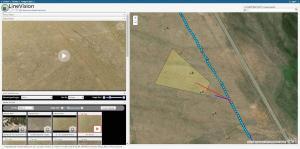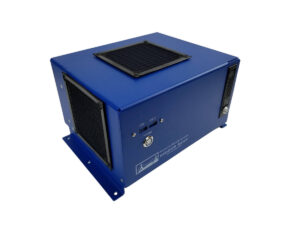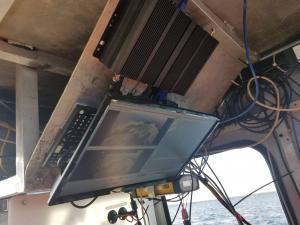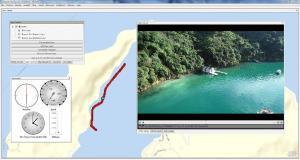With a growing need for higher-quality video footage with geospatial recording systems, it is important to consider the performance impact the higher quality settings create.
- Codec
- Resolution
- Framerate
- GPS Data Collection Rate (for geospatial playback, such as in our LineVision titles)
Codec
H.264 is one of the most popular codecs being used today, with a fair trade-off between hardware demands and video quality for a given bitrate. H.264 Hardware Decoding is widely supported in most video playback hardware today (including Intel, AMD, and NVidia GPUs, Smartphones, Smart TVs and other playback devices), which relieves the CPU of the work necessary to decode the video stream and allows the CPU to be available for other uses.
H.265 (also known as HEVC) is a successor to H.264. The primary advantage of H.265 is a higher compression ratio, allowing for a video at a given bitrate to retain a higher image quality than H.264. The downside to H.265 is that decoding is much more resource-intensive and more powerful hardware is needed to decode a given bitrate than H.264.
While hardware-supported H.265 decoding is available with a wide selection of hardware today, it is not as prevalent as H.264 decoding.
For example, the first Intel GPU with H.264 decoding was made available with the first Core processors in 2010, however H.265 decoding was not made available with Intel GPU’s until 2015 with 5th-Gen Core processors. A workstation made in 2013 may be unable to play back an H.265 video, while a similar workstation made two-years-later would be able to. Playback on devices such as smart phones, set-top appliances, tablets and other devices is also much less common than H.264
If hardware support to decode H.265 is not present, the CPU will be used to decode the video instead (also called software decoding). This can dramatically hit less powerful CPUs, causing playback to slow down to a slideshow, artifacts to appear, or audio to desync.
If cost of storage and bandwidth is not a concern, H.264 is a good option, due to being widely supported across all platforms, with a low performance cost.
Video Resolution
The most common resolutions in use today:
Standard Definition
480I (640 x 480, interlaced).
Old, non-HD TV sets commonly used this resolution.
480P (640 x 480, progressive)
Progressive, non-HD TV sets commonly used this resolution. Also commonly found with DVDs.
High Definition
720P (1280 x 720, progressive, 60FPS effective)
Full HD
1080P (1920 x 1080, Progressive. Framerate is usually denoted after the ‘P’)
Ultra HD (UHD)
4K (3840×2160, Progressive)
The higher the resolution, the higher the performance impact. Raw 4K video contains four times the data to process as 1080P, with a given framerate and color depth.
Framerate
NTSC:
60FPS, 30FPS.
PAL:
50FPS, 25FPS
Going from 30FPS to 60FPS doubles the raw data rate, which means the processor utilization to decode also increases significantly.
GPS Rate
For standard applications, we recommend a 1Hz GPS data rate. This means that GPS data is logged once per second.
Some devices offer a higher GPS rate, such as GoPro cameras that use a 18hz, and Remote Geo has built geoDVR systems with a 10Hz GPS. However, the more GPS points there are, the more intense the CPU usage is to map them all out. This is why by default, LineVision (and all our video mapping/editing software) will limit the GPS display-rate to 1HZ on the map.
By default, LineVision Desktop will limit the total number of GPS points of a video to 1000 to optimize the performance of the software. However, when multiple videos are loaded, with each one having 1000 points, CPU usage can grow dramatically to draw the thousands of points.
More Articles & News
Check out related articles, news and product updates from Remote GeoSystems.









